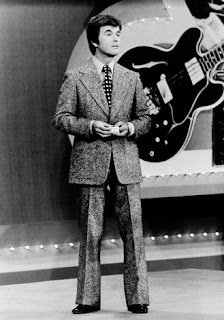It’s fitting that Americans have taken to the interwebs to laugh, cry, share and snark in a collective show of mass online grief over the death of our oldest teenager, Dick Clark, who passed away this week at the age of 82.
After all, what’s the preferred way of teenagers to connect over anything? Online, right? Social networks, texts, IMs.
We’ve seen the unfortunate passing of more than a few celebrities unfold on Twitter over the past year. Both real (Whitney Houston, Davy Jones) and imagined (Cher, Jon Bon Jovi, Chris Brown).
The news of Dick Clark’s death broke in a similar pattern, with tweets from Sen. John McCain, Rep. Mary Bono Mack, Snoop Dogg and Duran Duran within minutes of each other that got #DickClark trending and led to complete, standard journalism 101 obits coming forth from CNN, the Wall Street Journal and the New York Times within the hour. (By Journalism 101, we mean those obits we know were prepared and fact checked years in advance, all that’s needed is the lead paragraph that gives us the specifics of the death – time, place, cause.)
Flash forward to the wonderful world of Web 2.0 and the 24-hour news cycle.
In less than a day, a new phenomenon has been unleashed – the photo obit. Clark’s life, which played out for nearly 60 years on our TV screens, was well documented with photos from nearly every segment of it. Host of American Bandstand, New Year’s Rockin’ Eve and the $20,000 Pyramid, award ceremonies and guest appearances. We have young slicked back Dick, middle-aged sideburned and bell-bottomed Dick, older-aged super-tanned Dick. Whatever Dick you want, you can get in just one of the many photo tribute outpourings online. They come complete with captions that tell the story, in case you need them, but those are pretty much irrelevant.
There’s been a lot of talk in the past week since Facebook purchased the popular photo sharing app Instagram for $1 billion. Most people want to know why. It only took a week and the death of an 82-year-old teenager for that question to be answered.
Photographers have long known that pictures speak louder than words. Now the rest of the world knows this, too. For the past few years we’ve had less and less use for words, but we thought we needed at least 140 characters. Now we see that in the fast-paced, Web 2.0-driven 24-hour news cycle we don’t even need that. A good photo, and when warranted, a lifetime of great ones, can tell the story – at least at first glance.

Kathy Drasky regularly writes about online culture. Her marketing and communications work with the ANZA Technology Network, Advance Global Australians and with various Australians and Australian enterprises has led to at least a dozen trips Down Under.
An accomplished digital photographer, her photos have appeared in 7×7 Magazine, the San Francisco Chronicle and Google Schmap.









